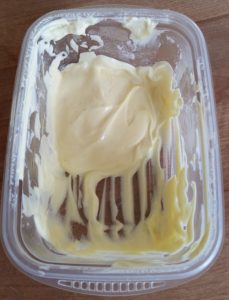One of the things I simultaneously anticipate and dread each year is the coming of late spring. That’s when the “warm months” really get rolling on the homestead, and everything moves outside into the garden and the fields.
The upsides to the whole thing do outweigh the downsides, all things considered. The garden, so meticulously planned through the winter, finally gets planted. If you’re doing things right, you’ve been harvesting some of the earliest things–brassicas, cold-weather greens, and the like. I really enjoy when our produce starts switching from store-bought to self-grown, fresh from the garden. And it won’t be long before we can start enjoying fresh fruits–cherries, blackberries, and eventually apples and pears.
The plants all have leafed out, of course. Some of them, like the tulip poplars locally, are still blooming, which is great for the bees. The black locust and others have already passed, but the sumac is just beginning. If the colonies were established, I’d be looking at the first honey harvest of the year. (Read more about my bees here.)
The hard parts, though, include keeping the yard mowed, and weeding everything. The garden is small enough (and packed enough) to do by hand, as long as we keep on top of it. My grain patch, out in the field, is tilled, and waiting patiently. I haven’t decided if I’ll do spring grains, given the lateness of the season, or wait for fall and do winter grains. Either way, I can put some red clover seed down as a cover and green mulch–and the bees, again, will love it.
All of the yard tending means breaking out the various pieces of outdoor equipment, tuning things up, and starting them up for the first time. 2018 thus far has seen our trusty riding lawn mower die. We had been eyeing a replacement anyway, so that timeline got moved up. I’ve also historically had very bad luck with small 2-cycle engines, so the string trimmer has finally been replaced with a cordless electric one.
Other ups and downs involve the “livestock”–the chickens, particularly. With the longer days, they tend to lay more regularly. But with the heat of summer already on us, several have gone broody. We move them to the “quarantine” coop, to keep them out of the nesting boxes. This has the added benefit of cooling them off a little, and helps break the broodiness. But the quarantine coop has a flaw…
Oddly, the raccoon (I believe–it may have been a fox) got in before we had any in the quarantine coop. I believe either the coop door wasn’t latched well, or it managed to figure out the gate latch. Either way, it got two of the girls. We’ve addressed the latch issue with the addition of a carabiner “lock.” The longer-term solution for the girls in quarantine will be to move them to “general population” for the overnight. (I’ll stay up late with my “varmint repellant” for a few nights, just in case the raccoon comes back.)
In the meantime, my wife requested the purchase of more chickens, to “boost” the flock (we were down to 18). A search was run, and a gentleman not too far away was selling year-and-a-half old laying hens for $5 each–a steal! He was suffering from a rat problem, and wanted to divest of his flock for a while, in the hopes of clearing the rats out. We went with the intention of getting five or six, and came home with eleven for the price of six. So our flock is nearly back to its largest (we’re at 29; we’ve had as many as 30). After a little assimilation and acclimation, we’ll probably be getting over two dozen eggs a day.
All of this, with an eye towards continued house renovations. We’ve got new appliances on order, to replace the older ones (in excess of 10 years old). Also a new refrigerator, with a different air recirculation mechanism. The current one keeps building up ice next to the fan, which leads to an extensive procedure to dismantle it and clean it out. Also finally getting a propane gas line run for the stove and water heater, plus a few minor “tweaks” to plumbing.
The last major thing for the summer is to re-insulate and seal the joists under the kitchen/dining room floor, with the hopes that they’ll stop buckling. There’s only so much we can do about the humidity and temperatures above it, but we can certainly keep the moisture and cool from coming up from below.
What do you like (and dread) about the switch-over from spring towards summer? I’d love to hear, in the comments below!

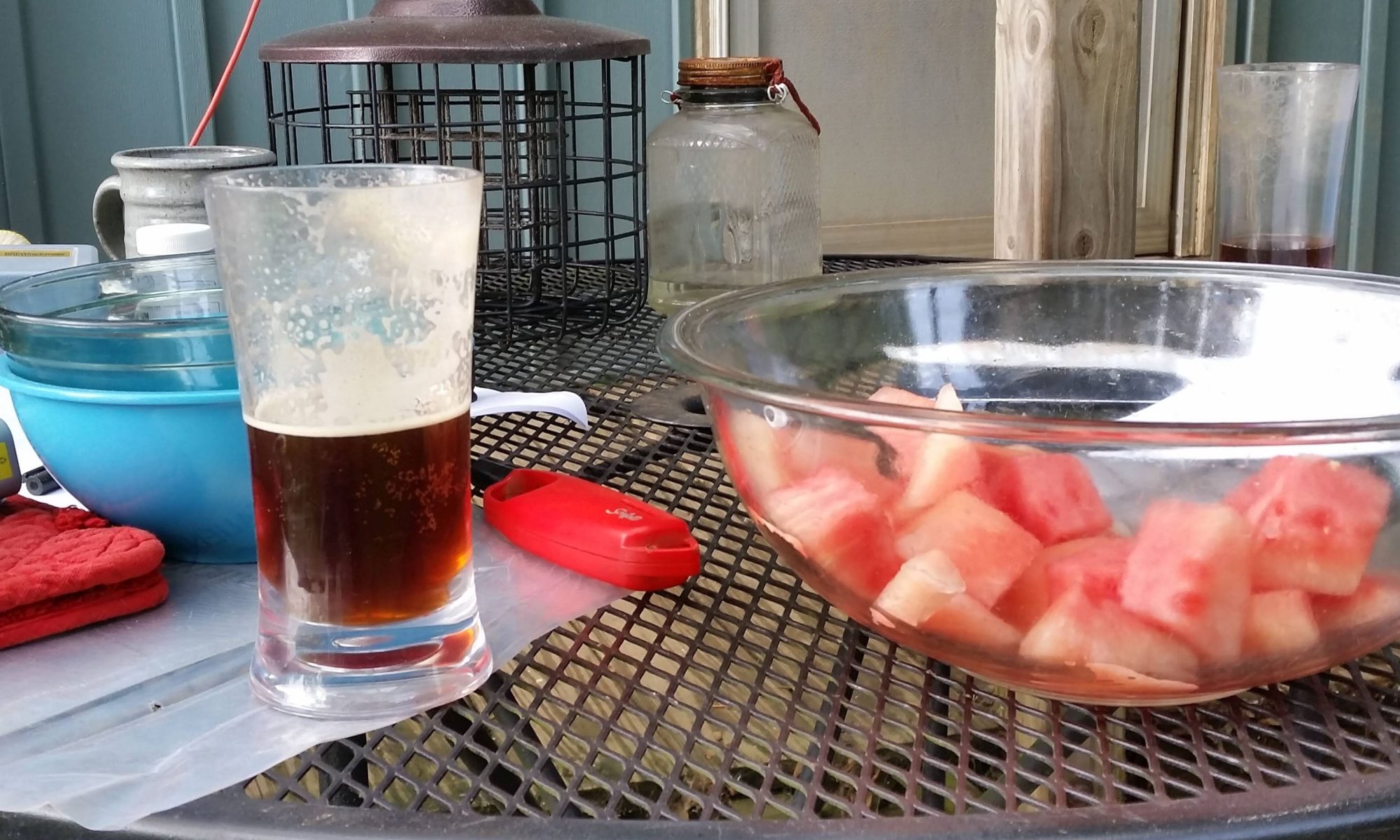
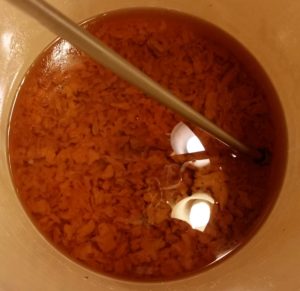 One other “achievement” for today was kegging last month’s batch. It turned out quite nicely, as a sort of “lawn-mower beer.” Pale golden, light in body, and astoundingly clear. In fact, here’s a picture of the last few inches of beer in the fermenter, with the sediment clearly visible through it. I think this will be a lovely Pennsic beer, nice and crisp and thirst-quenching.
One other “achievement” for today was kegging last month’s batch. It turned out quite nicely, as a sort of “lawn-mower beer.” Pale golden, light in body, and astoundingly clear. In fact, here’s a picture of the last few inches of beer in the fermenter, with the sediment clearly visible through it. I think this will be a lovely Pennsic beer, nice and crisp and thirst-quenching.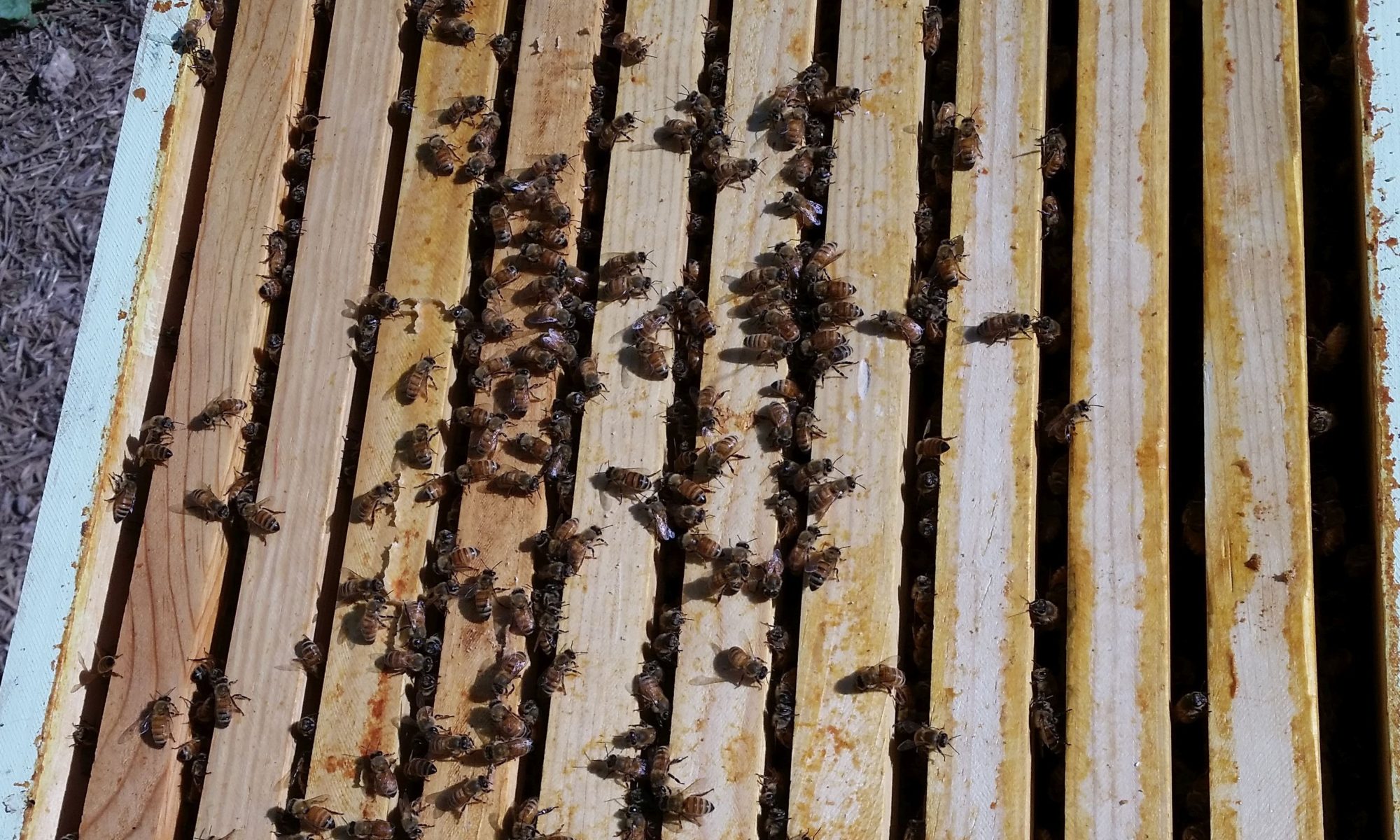
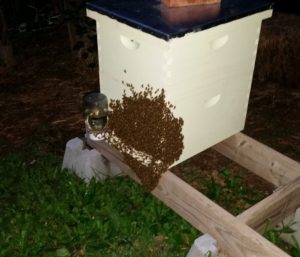 pics, here are more from last year, as they “bearded” the fronts of the hives.
pics, here are more from last year, as they “bearded” the fronts of the hives.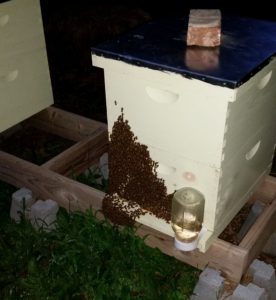 If any of you keep bees, I’d love to hear about them in the comments. What kind? How successful have you been with them? What tips do you have, that you could share with us?
If any of you keep bees, I’d love to hear about them in the comments. What kind? How successful have you been with them? What tips do you have, that you could share with us?